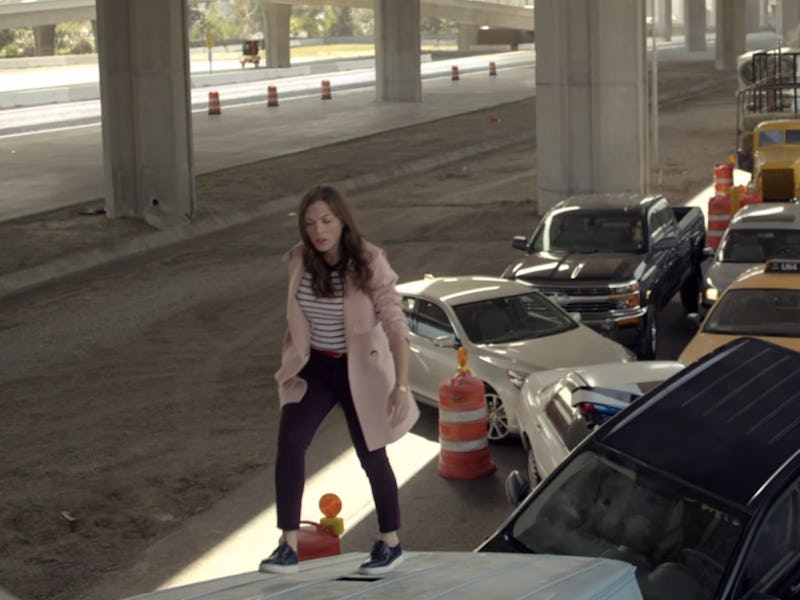Lyft's First Broadcast TV Commercial Is Full of Whimsy
There's a lot to unpack here.

As the established Number 2 in the ride-share industry, Lyft seems to be running with the idea that, to compete with monolithic Uber, it has to be aggressively weird to stand out for consumers. Its first-ever TV commercial drives that point home.
In a single one-minute commercial, we spy a bizarre traffic jam in Los Angeles that includes all the annoyances of driving: A guy driving his car with a boot on it; drunk people; skeezy men making eyes at you from another car during a traffic jam; tow trucks; parking tickets.
Then there’s a sad clown, a cluster of Shriners, a zebra and a giraffe, a literal pile-up of cars. The commercial makes real your surreal dreams about driving – and all the problems that come with it.
The subject of the piece is a young woman who ditches her own car and climbs over the pile-up of other cars, pulls out her phone, and opens the Lyft app to summon a ride. Soon, a shiny new Chevy appears — GM is a big investor in Lyft — with a female driver (there aren’t enough of them, and both Uber and Lyft want to change that) who picks up our subject with the name-question-style greeting most drivers employ (“Lauren?” “Hey.”).
Who hasn't seen this on the freeway?
With Lauren riding shotgun, the new friends they head toward a clear on-ramp and away from the madness, but only after sharing a laugh at a sad clown who honks twice at them. Lyft’s goal is clearly communicated with its new slogan: “Riding is the new driving.”
“One of the biggest challenges for us is to have people think about driving differently,” says Dave Schiff, chief creative officer at Made Movement, the Boulder-based ad agency that worked on the video. “Driving doesn’t represent the freedom that it once did.”
While it might be strange that a digital-first company like Lyft would use the relatively old promotional model of the television commercial, one study shows that ride-share customers are often young (25-34) and male. This commercial might go a long way to attract an older TV-watching audience and shine a light on female drivers and passengers.
“The commercial will be truly national,” Tim Rathschmidt of Lyft tells Inverse, so look for it soon.
Lyft also debuted this artwork for a new advertising campaign that Rathschmidt says will be seen in 19 markets and at 11 airports: